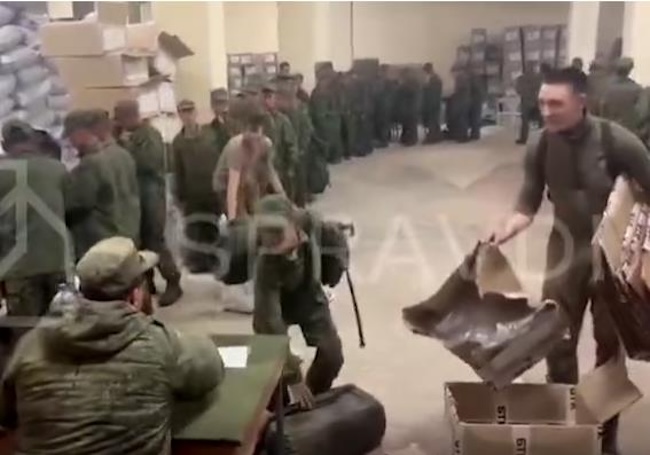
Disagreements, conflicts, clashes and wars are inevitable, integral parts of international relationships. Conflict management (CM) and conflict resolutions (CR) thus become the logical processes needed to deal with, control and resolve such enduring issues in interstate relations. CM denotes that the conflict has been addressed, mediated, handled and coped with pending eventual resolution whereas CR signifies that a conflict has been resolved, settled and brought to a fruitful closure.
A rational progression of a conflict therefore moves from its inception to its peaceful management and on to its eventual mutually agreed to resolution. CM is generally premised on the belief that wars and conflicts are inevitable and that it (CM) is the only viable way to deal with them. It is a process by which hostile parties work together to eliminate antagonism, create peace and reinstate order.
The objective is to reach an amicable, practical, mutually acceptable settlement that stops all violent actions and ushers in peace or a modicum thereof. It also brings forth certain bilateral or international institutions, fora and legal institutional mechanisms which address and potentially forestall and/or manage future conflicts. These may at times involve use of force, force short of war, coercive diplomacy, other methods like economic, military, technological sanctions etc.
Of late, 5GW has become a very handy tool in CM too. The Sino-Indian clashes along the LAC and their handling by both adversaries is a good example of CM where both antagonists ensure a tight control over the spread of the conflict - always stopping short of a potential limited or all out war - without prejudice to their booming bilateral trade. The Israel-Palestine-Gaza conflict however is not being managed at all; Israel has been given an unrestricted, unilateral license, a diabolical freedom of action to continue with its ruthless genocide of Gazans-Palestinians-Lebanese and whoever else pleases it - with the US-led West in unqualified, one-sided, unremitting, willing, obedient support! Another polio case reported in Sindh CR, on the other hand, is a more comprehensive, all-encompassing approach that gets the antagonists to work together to deal with the basic issues in the conflict.
The objective is to arrive at a political arrangement that obviates future conflicts by addressing their root causes and eliminating them systematically to the mutual satisfaction of all parties concerned. The typology of CR covers territorial disputes including interstate wars, intrastate or civil wars, water issues, sectarian conflicts, transnational terrorism etc. Strategies for CR in international relations or politics generally include diplomacy (coercive diplomacy included), sanctions of all types, military interventions and international law enforcement.
The 1968 arbitration by UK PM Harold Wilson helped resolve the Rann of Kutch border dispute between India and Pakistan. The Tripartite Agreement between SWAPO, South Africa and the UN was secured in 1989-90 which led to the independence of Namibia. Similarly, the Good Friday Agreement, between the British and Irish governments and various political parties, ended decades of violence and division in Northern Ireland.
However, Kashmir between Pakistan and India and the Isael-Palestine conflicts have defied resolution. In both cases, the spineless international and Muslim-Arab communities have been stunned into mental and operational paralyses through economic and diplomatic pressures from the US-led West. Markets run under KMC to be solarized: Mayor Karachi The South Asian region is beset with a multitude of simmering conflicts at the bilateral levels.
Almost all major disputes involve India, one way or the other. The most prominent ones revolve around the larger Kashmir region. India has a long-standing dispute with China over Aksai Chin, Ladakh and what it calls Arunachal Pradesh.
With Bangladesh, Myanmar, Nepal and Bhutan India has variously border, territorial and water issues to fix. It has already subsumed Sikkim. With Pakistan it has Kashmir, Siachen, the Indus Water Treaty, Sir Creek, transnational terrorism and a host of other issues to manage and resolve.
Kashmir is of extreme importance bilaterally, regionally as well as internationally. Ominously, three of the world’s most formidable military-nuclear-missile powers have a very contentious clash of national interests in this rather restricted area. This has created a very complex, sensitive and potentially volatile strategic environment.
To India’s detriment, China and Pakistan are strategic allies and could potentially pose a joint threat with the Kashmiri people enabling their efforts through a timely resurgence of their freedom struggle. It thus faces a potential two-three front war scenario. The strategic environment in the larger Kashmir region will become further vitiated in case of a US-China war in the Indo-Pacific.
Regardless of its ill-famed strategic autonomy, as a member of the QUAD, India might be required to engage China in the Himalayan sub-theatre of war. This portends sucking in the US and its allies, heightening the intensity and ferocity of the war and pushing it into global proportions! It is thus not without reason that the larger Kashmir region is widely acknowledged as the most likely nuclear flash point in the world. It is high time that all four parties concerned - China, India, Pakistan and the Kashmiris move to forestall all such devastating contingencies at the strategic level.
They must recognize, manage and resolve their bilateral issues themselves and move back collectively from the spectre and brink of conventional and potentially nuclear conflagration! PAC seeks record of Rs600 million subsidy to farmers for solar tube-wells in Sindh Can the South Asians and the Chinese people move beyond the domineering influences of the US-led West and decide their fates, destinies, fortunes and futures themselves? Is it time for a more innovative and drastically different approach to CM and CR in the larger South Asian region? Is an essentially joint trilateral approach, with the Kashmiris co-opted, possible; a massive diplomatic initiative that could involve China, India, Pakistan and the Kashmiri people to unshackle the destinies of well over 3 billion people and lead them to happier, healthier, more prosperous, contended, peaceful, mutually supporting, mutually beneficial lives? (To be continued) Imran Malik The writer is a retired brigadier of the Pakistan Army. He can be reached at im.k846@gmail.
com and tweets @K846Im. Tags: conflict management.














